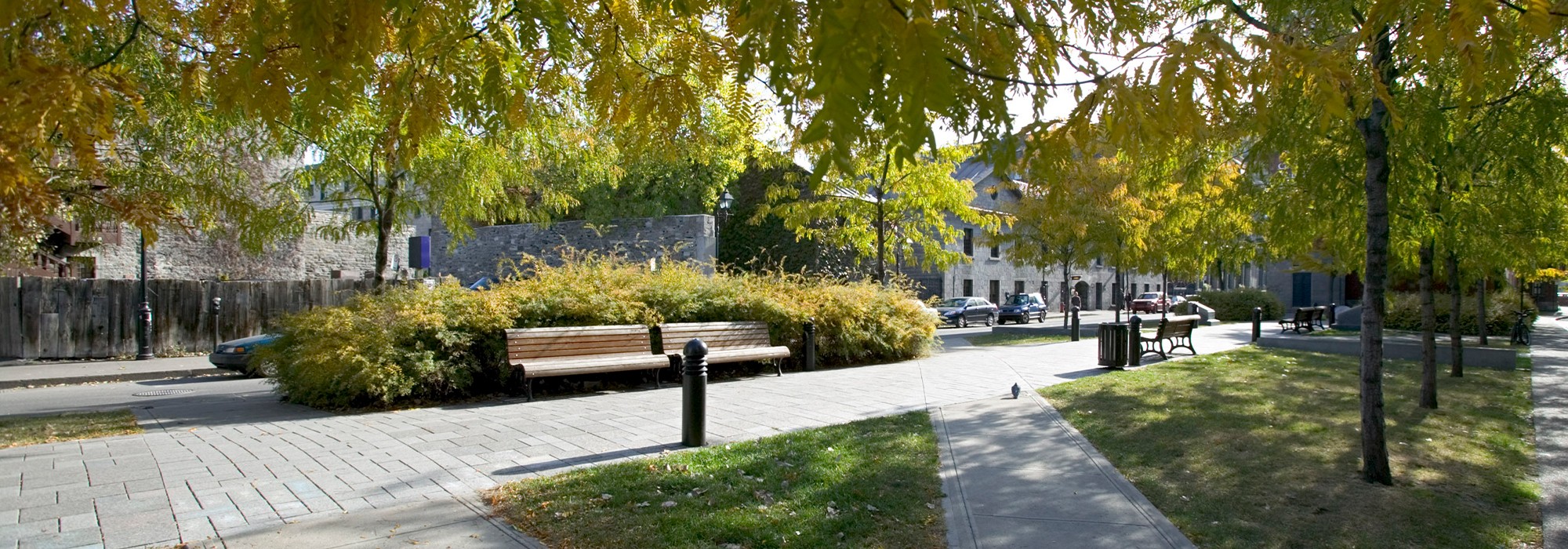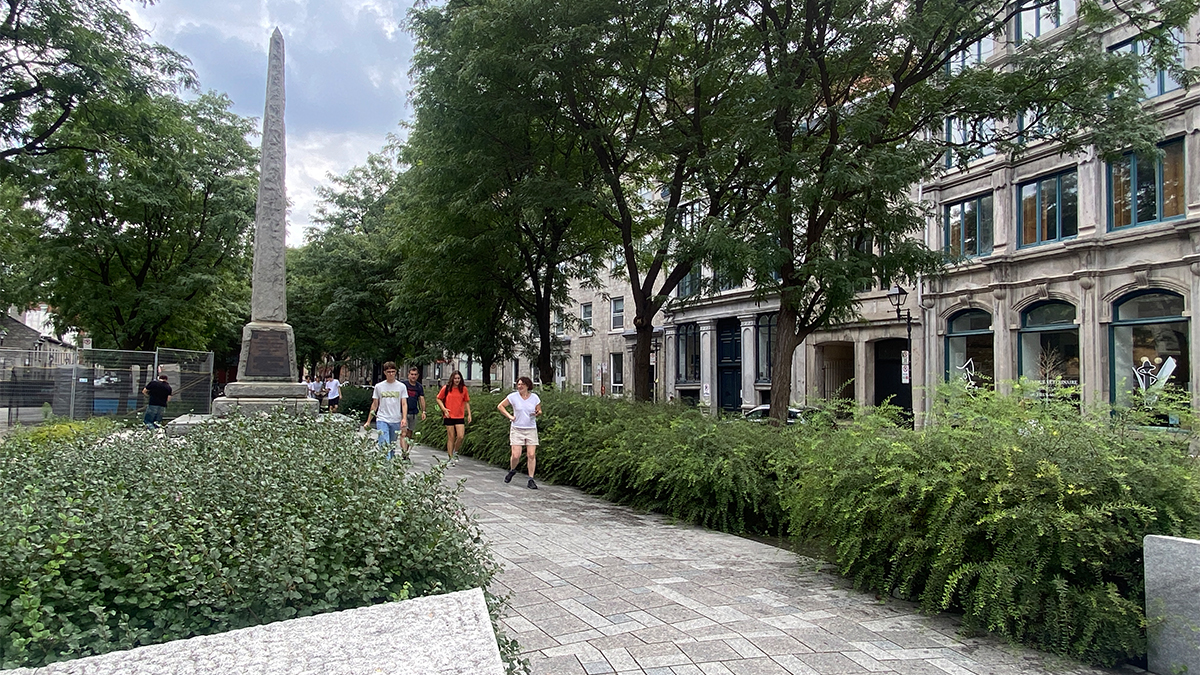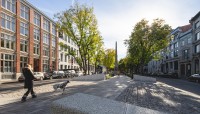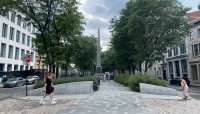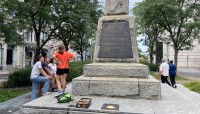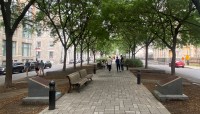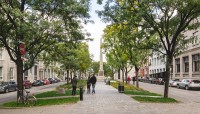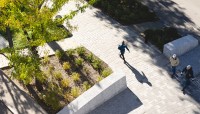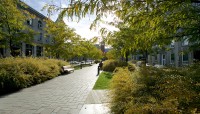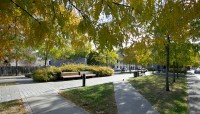Located west of the St. Lawrence River in Old Montreal, this northeast-southwest park measures 3.7 acres. Spanning four blocks, the competition-winning design incorporates a median framed by Place d’Youville, running approximately one-quarter mile in length. Designed by Claude Cormier + Associés and Groupe Cardinal Hardy (now IBI Group, Inc.) the boulevard was completed in 2002.
The linear site, partitioned by perpendicular cross-streets includes a generous, axial path carpeted with granite pavers that traverse the park and connect each end anchored by museums. The walk follows the orientation of a Saint Pierre River that was culverted in the nineteenth century. Diagonal paths of wood, concrete, limestone, and granite crisscross the park, resulting in irregular geometric lawn panels.
Paving materials play an interpretive role and were selected to illustrate the history and evolution of the site over a 500-year span, with paths radiating from building entrances reflecting each building’s historic use. (For example, residential uses are characterized with wood, while cultural and civic destinations are paved in stone.) Collectively the park’s circulation design animates the site’s history and introduces a diversity of ground plane material intended to evoke a quilt.
An allée of evenly spaced honey locust trees extend the length of the park, providing shade and unifying the three sections. The trees create a verdant frame for the park’s iconic feature, the Pioneers' Obelisk (1894), which stands 40-foot-tall and commemorates the establishment of Fort Ville-Marie.
The project received the Canadian Society of Landscape Architects’ National Merit Award and the Regional Honor Award in 1999.



